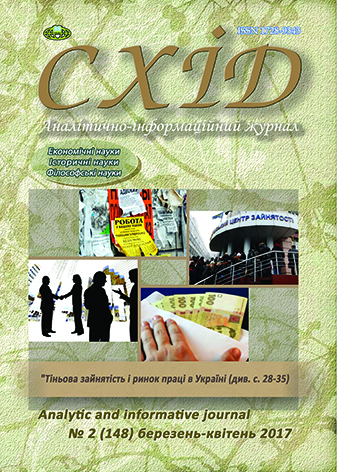Mechanisms of public-private partnership in the projects of urban agglomerations development
DOI:
https://doi.org/10.21847/1728-9343.2017.2(148).102656Keywords:
public-private partnership, urban agglomerations, development projects, mechanisms, sphere of life support, agglomeration effect, regulatory supportAbstract
The article examines the possibilities of using the mechanisms of public-private partnership when implementing the projects on urban agglomerations development. Specific features of the urban agglomerations development are identified. They are based on combining the efforts of the territorial communities and aimed at implementing joint projects by attracting the appropriate resources, which allows to obtain an agglomeration effect and ensure the improvement of the quality of life of the population. It was proved that to implement joint projects on the basis of using the mechanisms of public-private partnership it is necessary to attract private investors. The experience of using the mechanisms of public-private partnership in Ukraine is analyzed in two directions: by region and by type of activity. It was found that a significant part of projects with using public-private partnership mechanisms in the sphere of life support for large cities and agglomerations is carried out in the form of a concession. Concession allows to attract financial resources needed for the implementation of the development projects due to the ability to manage property over a long period of time, and also helps to prevent a monopolistic increase in the cost of services. The necessity of expanding the use of mechanisms of public-private partnership when implementing joint projects on the development of life support sphere for urban agglomerations was substantiated. Undoubtedly, it will be of great interest for private investors. In particular, it is the improvement of the tariff setting and tariff regulation policy, a strict control over the targeted use of funds, the transparency and economic certainty of costs, the balance of economic interests and the responsibility of those people who take part in the implementation of public-private partnership projects. Here, the scheme of the formation and implementation of joint projects on public-private partnership is presented that includes the observance of certain principles, the use of appropriate regulatory, economic and organizational methods, as well as the support of the economic security through risk management. Scientific approaches to improving the regulatory support for the use of public-private partnership mechanisms have been generalized, and the directions for making changes in the current legislation have been determined. The above measures will contribute to increased use of public-private partnership mechanisms when implementing joint projects aimed at developing the sphere of life support for urban agglomerations.
Downloads
References
The Cabinet of Ministers of Ukraine (2017), Resolution of The Cabinet of Ministers of Ukraine «About approving the State strategy of regional development for the period till 2020», available at: http://zakon4.rada.gov.ua/laws/show/385-2014-п, (Accessed 25 April 2017) (ukr).
Shilepnytskyi, P. I. (2011), Public-private partnerships: Theory and Practice: monograph, Institute for Regional Studies of NAS of Ukraine, Lviv, 455 p. (ukr).
Moskvichova, O. S. (2015), Public-Private Partnership in Ukraine: Problems of Development, Scientific Bulletin of Kherson state University. Series «Economics», vol. 13, Part. 3, pp. 50-52 (ukr).
Kylymnyk, I. I., Koliada, T. A., Dombrovska, A. V., Et al. (2015), Legal regulation of Public-Private Partnership in Housing and Communal Services of Ukraine, Nationally Kharkiv University of Municipal Economy im. O. M. Beketova, Kharkіv, 131 p. (ukr).
Danylyshyn, V. I., Stefankiv, O. M., Tsizhma, O. A. (2016), Foreign experience of public-private partnership and proposals for its improvement in Ukraine, Vol. 11, pp. 332-336, available at: http://global-national.in.ua/issue-11-2016/19-vipusk-11-cherven-2016-r/2116-danilishin-v-i-stefankiv-o-m-tsizhma-o-a-zarubizhnij-dosvid-derzhavno-privatnogo-partnerstva-ta-propozitsiji-shchodo-jogo-vdoskonalennya-v-ukrajini, (Accessed 26 April 2017) (ukr).
Kredisov, A. I., Bilous, A. O. (2016), Public-private partnership: international experience and its use in Ukraine, Economy of Ukraine, 2016, No. 2, pp. 4-15 (ukr).
Busch, N. E., Givens, A. D. (2013), Achieving Resilience in Disaster Management: The Role of Public-Private Partnerships, JSS (Journal of Strategic Security). Vol. 6, № 2. Doi: 10.5038/1944-0472.6.2.1.
The Verkhovna Rada of Ukraine (2017), The Law of Ukraine «On public-private partnership», available at: http://zakon2.rada.gov.ua/laws/show/2404-17, (Accessed 24 April 2017) (ukr).
The Ministry of Economic Development and Trade of Ukraine (2017), Official website, available at: http://www.me.gov.ua/Documents/List?lang=uk-UA, (Accessed 20 April 2017) (ukr).
A Guidebook on public-private partnership in infrastructure (2011), Economic and Social Commission Asia and the Pacific (UNESCAP), 76 p., available at: http://www.unescap.org/ttdw/common/TPT/PPP/text/ppp_guidebook.pdf, (Accessed 24 April 2017) (eng).
The Ministry of Regional Development, Construction and Housing and Communal Services of Ukraine (2017), Official website, available at: http://www.minregion.gov.ua/index.php?category=tp-stat, (Accessed 26 April 2017) (ukr).
Yehoue, Etienne & Hammami, Mona and Ruhashyankiko, Jean-François (2006), Determinants of Public-Private Partnerships in Infrastructure, IMF Working Papers, Vol. 06, issue 99, doi: 10.5089/9781451863598.001
Downloads
Published
How to Cite
Issue
Section
License
Copyright (c) 2017 Maryna Melnykova, Yеlyzaveta Gradoboіeva

This work is licensed under a Creative Commons Attribution-NonCommercial-NoDerivatives 4.0 International License.
1. Authors bear responsibility for the accuracy of facts, quotations, numbers and names used.
2. Manuscripts are not sent back.
3. The publisher does not always agree with the authors' opinion.
4. The authors reserve the right to authorship of the work and pass the first publication right of this work to the journal under the terms of a Creative Commons Attribution-NonCommercial-NoDerivatives 4.0 International License. This license allows others to distribute (copy) the published work for non-commercial purposes, provided there is mandatory attribution to its authors and a link to the first publication in our journal.
5. The authors have the right to conclude separate supplement agreements that relate to non-exclusive work distribution in the form in which it has been published by the journal (for example, to upload the work to the online storage of the journal or publish it as part of a monograph), provided that the reference to the first publication of the work in this journal is included.

